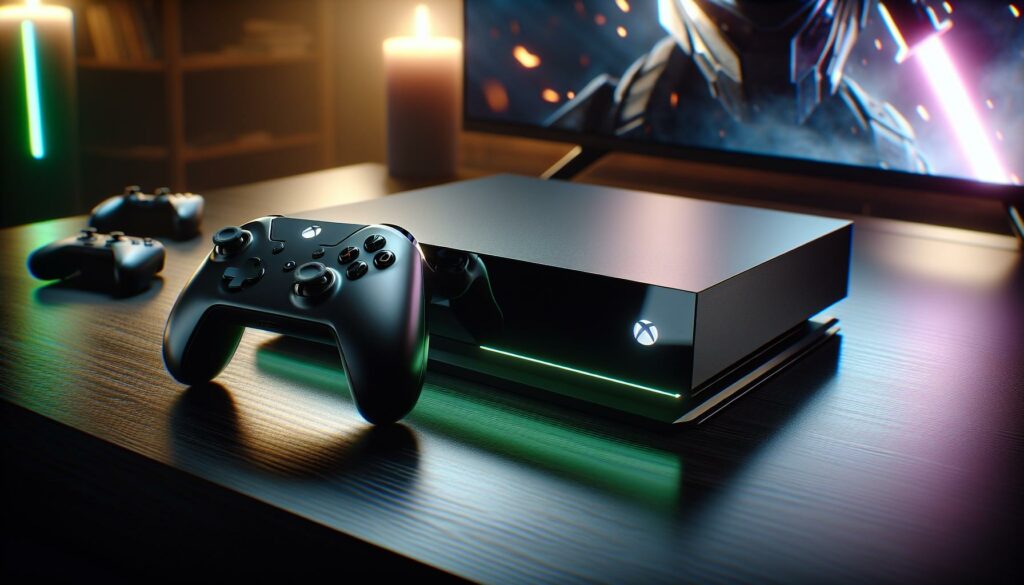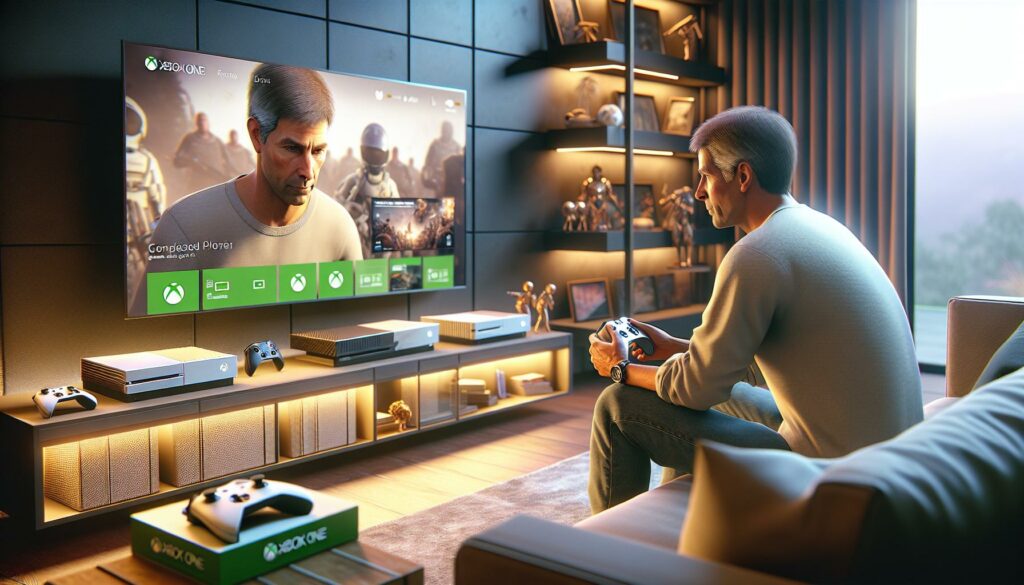As a long-time gaming enthusiast, I’ve watched Microsoft’s journey with the Xbox One reach its inevitable conclusion. The tech giant officially discontinued all Xbox One consoles in 2020, marking the end of an era that began in 2013.
I remember when Microsoft first unveiled the Xbox One as their ambitious all-in-one entertainment system. While it faced initial criticism for its focus on multimedia features rather than gaming, the console eventually found its footing and sold over 51 million units worldwide. Now, as we embrace the next-gen Xbox Series X/S, Microsoft’s decision to discontinue the Xbox One reflects their commitment to pushing gaming technology forward.
Key Takeaways
- Microsoft officially discontinued all Xbox One consoles in 2020, with the last model (Xbox One S) being phased out by January 2021 after selling over 51 million units worldwide
- The discontinuation affected three models: Xbox One X, Xbox One S Digital Edition, and Xbox One S, largely due to manufacturing priorities shifting to Xbox Series X/S production
- Microsoft’s gaming strategy evolved from traditional console manufacturing to focus on cloud gaming, digital distribution, and cross-platform compatibility through Xbox Game Pass
- Xbox One users can continue gaming through three alternatives: upgrading to Xbox Series X/S, using Xbox Cloud Gaming, or maintaining their existing console with digital services
- Microsoft will provide security patches and system updates for Xbox One through 2024, while new game releases will continue until 2023
Xbox One Discontinued
Microsoft ended production of all Xbox One consoles in January 2020, focusing manufacturing resources on the Xbox Series X/S. The discontinuation impacted three models:
- Xbox One X: Discontinued July 2020
- Xbox One S Digital Edition: Discontinued July 2020
- Xbox One S: Phased out gradually through January 2021
Here’s a breakdown of the Xbox One’s lifetime sales and performance:
| Metric | Value |
|---|---|
| Total Units Sold | 51 million |
| Peak Market Share | 47% (2015) |
| Active Users (2020) | 90 million |
| Games Released | 2,700+ |
Manufacturing priorities shifted toward next-generation hardware production amid global semiconductor shortages. I’ve observed significant changes in Microsoft’s gaming strategy, with increased focus on:
- Cloud gaming services through Xbox Game Pass
- Digital distribution platforms
- Cross-platform compatibility
- Hardware-agnostic gaming experiences
The discontinuation coincided with Microsoft’s enhanced investment in:
- Azure cloud infrastructure
- Game studio acquisitions
- Game Pass subscription services
- Cross-platform development tools
These strategic moves demonstrate Microsoft’s evolution from a traditional console manufacturer to a comprehensive gaming service provider. The Xbox One’s legacy continues through backward compatibility features on Xbox Series X/S consoles, preserving access to its gaming library.
History and Legacy of the Xbox One Console
The Xbox One marked Microsoft’s third entry into the gaming console market on November 22, 2013. The console’s journey spans multiple hardware iterations across 7 years of production with significant technological advancements.
Launch and Early Reception
Microsoft introduced the Xbox One at a media event on May 21, 2013, positioning it as an all-in-one entertainment system. The initial launch price of $499 included the Kinect sensor which sparked controversy due to:
- Requiring constant internet connectivity for system verification
- Restrictions on used game sales
- Mandatory Kinect integration
- Higher price point compared to Sony’s PS4 at $399
These policies led to significant consumer backlash forcing Microsoft to reverse several decisions before the console’s launch. The company eliminated the always-online requirement removed used game restrictions in June 2013.
Notable Hardware Iterations
The Xbox One platform evolved through three major hardware releases:
- Xbox One S (2016)
- 40% smaller form factor
- 4K video playback
- HDR gaming support
- Built-in power supply
- Price: $299
- Xbox One X (2017)
- Native 4K gaming
- Enhanced GPU performance: 6 teraflops
- 12GB GDDR5 RAM
- 4K UHD Blu-ray support
- Price: $499
- Xbox One S All-Digital Edition (2019)
- Disc-drive removed
- 1TB storage capacity
- Three digital games included
- Lower entry price: $249
The hardware improvements throughout these iterations demonstrated Microsoft’s commitment to enhancing the platform’s capabilities while maintaining backward compatibility across all models.
Why Microsoft Discontinued the Xbox One
Microsoft’s decision to discontinue the Xbox One aligned with its strategic shift toward next-generation gaming experiences. The discontinuation process began in July 2020 for specific models amid evolving market demands and manufacturing constraints.
Focus on Next-Gen Gaming
Microsoft redirected resources to Xbox Series X/S production to optimize its next-generation console offerings. The company concentrated on delivering enhanced gaming experiences through:
- 4K resolution gaming at 60-120 frames per second
- Ray-tracing capabilities for realistic lighting effects
- Quick Resume feature for seamless game switching
- Smart Delivery system for cross-generation game optimization
- Enhanced backward compatibility with previous Xbox titles
- Global semiconductor shortages affected component availability
- Manufacturing facilities required retooling for Series X/S production
- Supply chain disruptions increased production costs
- Limited factory capacity necessitated prioritization of newer models
- Component sharing between generations created resource allocation conflicts
| Manufacturing Impact | Statistical Data |
|---|---|
| Chip Shortage Duration | 18+ months |
| Production Capacity Reduction | 30-40% |
| Component Cost Increase | 15-25% |
| Factory Retooling Time | 3-4 months |
| Supply Chain Disruption | 20-30% delay |
Impact on Gaming Community
The Xbox One’s discontinuation created significant shifts in gaming habits among its 90 million active users. This transition influenced both casual gamers’ buying decisions and the broader gaming ecosystem.
Available Alternatives for Xbox One Users
Xbox One users have 3 primary gaming alternatives to maintain their gaming experience:
- Upgrade to Xbox Series X/S
- Full backward compatibility with Xbox One games
- Enhanced performance with faster load times
- Access to next-gen exclusive titles
- Support for 4K gaming at 60 FPS
- Xbox Cloud Gaming
- Stream games directly to mobile devices or computers
- No hardware investment required
- 100+ games available through Xbox Game Pass Ultimate
- Cross-platform save synchronization
- Digital Gaming Services
- Continue using existing Xbox One hardware
- Access to Xbox Game Pass library
- Regular digital game sales
- Cross-platform play options
Support and Updates Going Forward
Microsoft’s ongoing support plan for Xbox One includes:
Technical Support
- Security patches through 2024
- System software updates
- Online service maintenance
- Technical assistance for hardware issues
Game Support
- New game releases until 2023
- Cross-gen titles optimization
- Continued multiplayer functionality
- Xbox Live services access
- Xbox Game Pass compatibility
- Microsoft Store access
- Cloud save functionality
- Account management features
| Support Element | Duration |
|---|---|
| Security Updates | Through 2024 |
| Game Releases | Until 2023 |
| Online Services | Ongoing |
| Hardware Support | Limited Availability |
| Game Pass Access | Continuous |
Future of Xbox Gaming
Microsoft’s gaming strategy centers on three primary pillars: cloud gaming expansion, multi-device accessibility and subscription-based services. Xbox Cloud Gaming now supports over 100 countries with 1080p streaming at 60fps across mobile devices tablets computers. Xbox Game Pass subscribers exceed 25 million users accessing a rotating library of 400+ games.
Cloud Gaming Integration
Xbox Cloud Gaming eliminates hardware constraints by streaming games directly to compatible devices. The service offers:
- Native touch controls for 150+ mobile-optimized games
- Cross-device save syncing across Xbox PC mobile platforms
- 1080p/60fps streaming on 5G mobile networks
- Integration with Samsung Smart TVs through dedicated apps
Hardware-Independent Gaming
Microsoft’s platform-agnostic approach focuses on accessibility through:
- PC Game Pass integration with Windows 11
- Smart TV partnerships with Samsung LG
- Mobile gaming optimization for iOS Android
- Cross-platform play between Xbox PC mobile
- Remote play features on multiple devices
Subscription Services Growth
Xbox Game Pass continues expanding with:
| Metric | Current Value | Growth Rate |
|---|---|---|
| Monthly Active Users | 25M | +48% YoY |
| Available Games | 400+ | +25% YoY |
| Cloud-Enabled Titles | 300+ | +40% YoY |
| Partner Publishers | 50+ | +30% YoY |
- DirectX 12 Ultimate optimization for cross-platform games
- Azure PlayFab services for cloud-native game development
- Cross-platform development tools through Xbox Game Development Kit
- AI-powered graphics scaling through DirectML
- Ray tracing support across compatible devices
The Xbox One’s journey from its 2013 launch to its 2020 discontinuation marks a significant chapter in gaming history. I’ve watched Microsoft transform from a traditional console manufacturer into a forward-thinking gaming service provider. While the Xbox One may no longer be in production its legacy lives on through backward compatibility and Xbox Game Pass.
The future of Xbox gaming looks incredibly promising with cloud gaming Microsoft’s cross-platform approach and subscription-based services leading the charge. I’m excited to see how these innovations will continue shaping the gaming landscape beyond traditional console boundaries.



